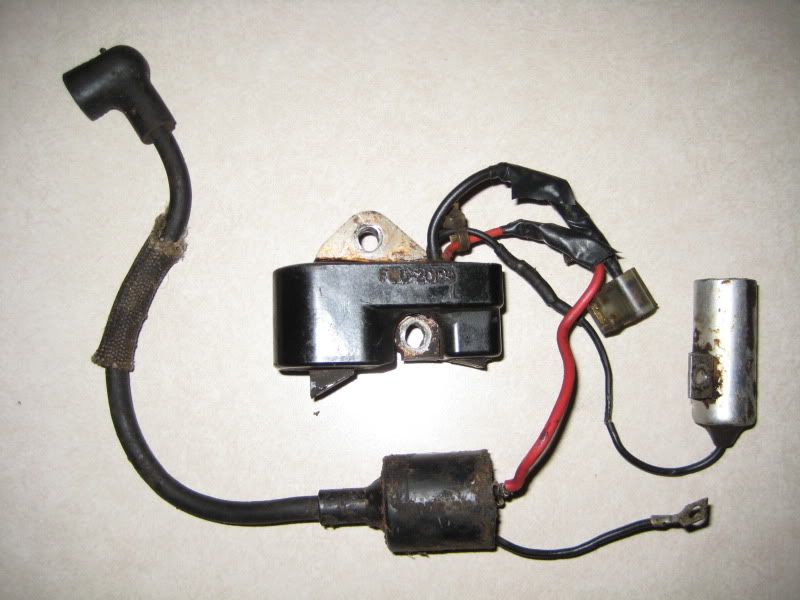This an oversimplification, but here's how it works:
As the flywheel magnets moveup on the stator coil, they induce a current, some of which gets momentarily stored in the capacitor. Some goes to ground through the primary windings of the spark coil, but since its so little current, nothing really happens in the high-tension windings
At some point the magnet passes the stator pole and the curent field begins to reverse; the condensor "dumps" its charge (in reverse) instantly collapsing the field in the primary winding of the spark coil. You get a spark!
Here are the tests I would make withought knowing the values of the parts involved:
Separate the leads out of the stator piece and check continuity with no connection to the spark coil. You should have a small resistance, but not zero which could indicate a short. If it seems OK, hook your meter up ( a sweeping needle works better here than a digital) as a voltmeter and spin the engine. You should be able to create an alternating current of about 2-5 volts at cranking speeds. You'll probably see it better on D.C. meter setting. If you see some action, the stator coil is probably OK.
Check the condesnor for shorts, and if you have the right meter, check for capacitance. You may find a small-engine shop that still has a merc-o-tronic meter and someone who knows how to use it for this; failing that check with radio/tv shops, etc.
Withought knowing the specifics of your system, I don't want to suggest what values you're going to want to look for. Typical points-style ignitions usually had capacitirs around .25 uF, while most CDI's like to store more electrons; up to 1 uF or a little more. The capacitance determines not only energy released but timing so you'll need to get it right...I hope and pray someone who knows the answer chimes in here to help out!
To check the spark coil, check the primary and secondary winding resistances: the primary should be a small value (like 1-3 ohms) while the 2ndary will be in the 1000's. If your values fall into this range, test spark. I use an old tractor distributor and a battery: connect the coil terminal to the low-tension lead, connect the other side (or ground) to the neg terminal of the battery and connect the positive terminal of the battery to the distributor body to complete the path. Put a plain (non resistance) plug you know is good and ground the plug to the distibutor body: now give the distributor gear a twist. Use a small battery like a 6v lantern battery, or my favorite, a tired 6V tractor battery. If you see sparks, your coil is probably good.
Because I love to play with old stuff like this I have the old distributor mounted in wooden block and electrical clips and leads at the ready for a quick coil test. If you're not in a hurry, you can conjure up almost anything that will serve. I learned this trick from an auto shop teacher in HS who used nothing more than a chev 6 points and condensor set mounted on a piece of wood, but his setup could result in a sharp jolt if you wereen't careful where you put your fingers to poke the points open.






